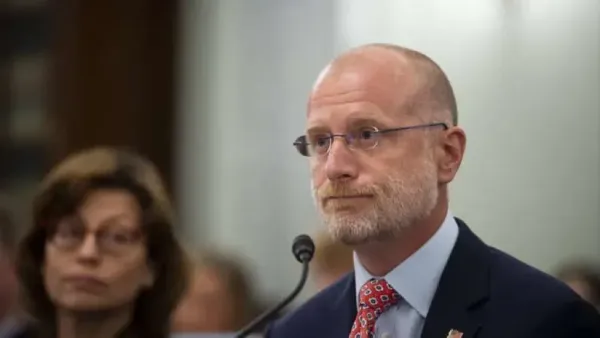GoodBye Network Neutrality, Welcome Open Internet!
WASHINGTON, October 26, 2009 – Absent from the notice of proposed rulemaking released by the Federal Communications Commission Thursday is the charged term of “network neutrality” that has been discussed over the years. Instead, the paper is focused on the need to preserve an “open internet” through
WASHINGTON, October 26, 2009 – Absent from the notice of proposed rulemaking released by the Federal Communications Commission Thursday is the charged term of “network neutrality” that has been discussed over the years. Instead, the paper is focused on the need to preserve an “open internet” through government intervention.
The problem is that neither the principle of network neutrality – which deals with how broadband providers may charge differential rates for preferred business customers – or the need to preserve an “open internet” are precise words. Defining either for the purpose of government rules is not an easy task.
The focus on “open internet” versus “network neutrality” in the FCC’s proposed rules and the statement released by FCC Chairman Julius Genachowski makes sense given that it is easier to find supporters of the former than the latter. Still, President Obama used the term “network neutrality” during his campaign.
Regardless of the language used, the discussion of whether the government should become more involved to support network neutrality principles has gone on for years.
“Three years ago we were having a very different discussion; we didn’t have the kinds of applications on the Internet that we have today,” said Rob Atkinson, president of the Information Technology and Innovation Foundation. “Three years from now, we are going to have issues come up that we couldn’t predict today.”
Andy Schwartzman, president of the Media Access Project, said “I would say that the biggest change in the net neutrality debate has been the emergence of high speed wireless networks. This has made the issue more complex, and also more real, to people.”
A second factor is the effort of the large carriers to “make content providers subject to regulation,” he said. Schwartzman noted that the role of edge players such as Google, Skype and Amazon has become more and more important.
“Network neutrality – the concept that the Internet should remain free and open to all comers – has been a major public policy priority for Google over the last two years. But anyone who has followed the debate closely knows that one of the challenges raised by our opponents has been defining what exactly the term means. The fact is, net neutrality can mean different things to different people,” wrote Google’s Washington Telecom and Media Counsel Richard Whitt in a 2007 blog post.
At the time, Whitt clarified what Google meant by the term. He was also reacting to some statements by top Google executives suggesting a softening of the company’s hard-line views on the subject. Whitt noted “that lack of broadband competition gives providers the market incentive and ability to discriminate against Web-based applications and content providers.”
If the definition of either network neutrality or what it means to ensure an open internet were clear and confined, the FCC would not need 107 pages to address the issues at hand and to explain why establishing rules governing internet access makes sense even as technology continues to evolve.
Atkinson defined the issues at the heart of the debate as being “first whether ISPs have blocked or degraded Web sites and under what circumstances, if any should this be allowed.”
The problem of blocking legitimate web sites or applications has never been realized, Atkinson said, with the exception of the case of Madison River, a small internet service provider blocking Vonage’s voice-over-internet-protocol applications. “The second issue is whether commercial arrangements should be allowed that would enable content and application providers who paid higher premiums to get better delivery of their Web products,” he said. “The third issue is how ISP networks should be managed to enhance performance.”
Atkinson urged the FCC to establish a generalized principle for a fair and open internet and enforce that principle on a case-by-case basis.
Genachowski summed up the challenge last Thursday, when he said, “[D]o any of us think that the draft rules proposed today perfect? Are they set in stone? No—we are at the beginning of a rulemaking process, with draft rules offered in the context of a Notice that seeks to spot the issues, ask the hard questions, and seek broad public input.”
About BroadbandCensus.com
BroadbandCensus.com was launched in January 2008, and uses “crowdsourcing” to collect the Broadband SPARC: Speeds, Prices, Availability, Reliability and Competition. The news on BroadbandCensus.com is produced by Broadband Census News LLC, a subsidiary of Broadband Census LLC that was created in July 2009.
A recent split of operations helps to clarify the mission of BroadbandCensus.com. Broadband Census Data LLC offers commercial broadband verification services to cities, states, carriers and broadband users. Created in July 2009, Broadband Census Data LLC produced a joint application in the NTIA’s Broadband Technology Opportunities Program with Virginia Tech’s eCorridors Program. In August 2009, BroadbandCensus.com released a beta map of Columbia, South Carolina, in partnership with Benedict-Allen Community Development Corporation.
Broadband Census News LLC offers daily and weekly reporting, as well as the Broadband Breakfast Club. The Broadband Breakfast Club has been inviting top experts and policy-makers to share breakfast and perspectives on broadband technology and internet policy since October 2008. Both Broadband Census News LLC and Broadband Census Data LLC are subsidiaries of Broadband Census LLC, and are organized in the Commonwealth of Virginia. About BroadbandCensus.com.










Member discussion